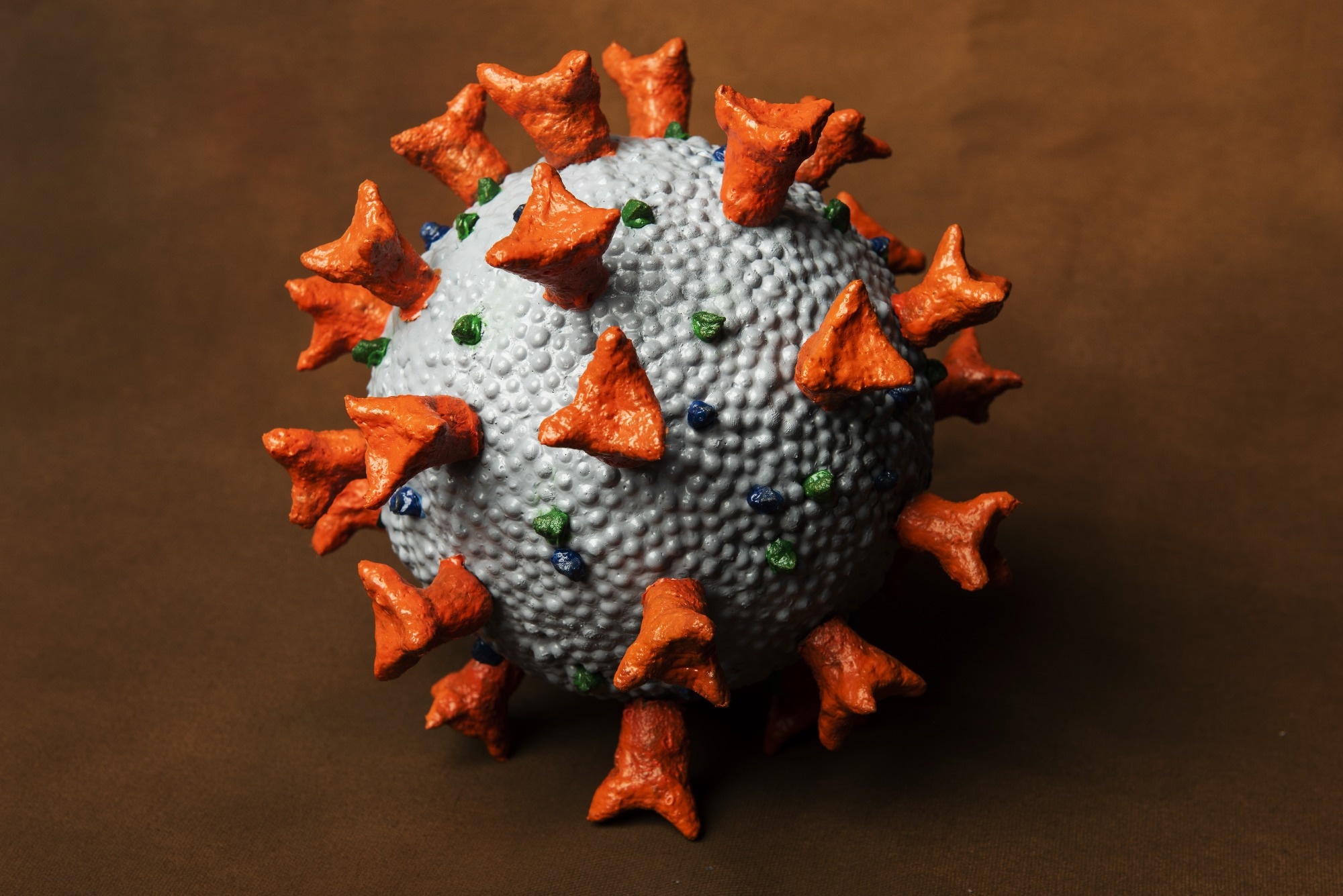In a recent study posted to the bioRxiv* preprint server, researchers in the United States assess the efficacy of the human surfactant protein A (SP-A) against severe acute respiratory syndrome coronavirus 2 (SARS-CoV-2) infectivity.
 Study: Human Surfactant Protein A Alleviates SARS-CoV-2 Infectivity in Human Lung Epithelial Cells. Image Credit: Filip Fuxa / Shutterstock.com
Study: Human Surfactant Protein A Alleviates SARS-CoV-2 Infectivity in Human Lung Epithelial Cells. Image Credit: Filip Fuxa / Shutterstock.com




What is human SP-A?
Human SP-A is a hydrophilic protein found on mucosal epithelial surfaces of the upper airway and lungs. This protein can bind to pathogen-associated molecular patterns (PAMPs) of invading microbes.
In silico analysis suggests that SP-A may have a similar affinity to the SARS-CoV-2 spike protein as the angiotensin-converting enzyme 2 (ACE2)-spike interaction, which could potentially impact the development of SARS-CoV-2 infection. Efforts are being made globally to develop and enhance immunomodulatory and antiviral agents due to the continuous evolution of SARS-CoV-2 variants that threaten the effectiveness of novel vaccines and therapeutics for coronavirus disease 2019 (COVID-19).
About the study
In the present study, researchers investigate whether SP-A can interact with SARS-CoV-2 spike, receptor-binding domain (RBD), and ACE2 in human cells
Herein, the competitive inhibition of SP-A recognition of RBD and S protein by sugars was examined by incubating SP-A with immobilized RBD and S protein with sugars. The team assessed whether there was a direct interaction between SP-A and ACE2. Furthermore, the impact of SP-A on RBD-human ACE2 (hACE2) interaction was examined by incubating them simultaneously on RBD-immobilized enzyme-linked immunosorbent assay (ELISA) plates.
The potential of SP-A to hinder the infectivity of SARS-CoV-2 was assessed using pseudotyped particles as well as the infectious SARS-CoV-2 Delta variant. The ability of SP-A to bind S protein and RBD and subsequently inhibit viral entry was also assessed.
Assays were conducted to confirm the involvement of SP-A in the infectivity, binding, and entry of the SARS-CoV-2 Delta variant. Additionally, SP-A levels in the salivary samples of COVID-19 patients who were hospitalized with different levels of disease severity were also determined.
Results
SP-A showed dose-dependent binding to the SARS-CoV-2 S protein in the presence of calcium. However, the presence of ethylenediaminetetraacetic acid (EDTA) reduced the interaction between SP-A and S protein by 46%. This suggests that while SP-A and S protein binding was somewhat calcium-dependent, other non-calcium-dependent regions may also be involved in their interaction since EDTA was not able to completely eliminate SP-A and S protein binding.
SP-A also showed dose-dependent binding to immobilized SARS-CoV-2 RBD. EDTA exposure resulted in a 59% reduction in SP-A and RBD binding, thereby indicating that the SP-A and RBD interaction involves the SP-A carbohydrate recognition domain (CRD) along with other domains.
Mannose and maltose decreased SP-A and S binding, while galactose and GlcNAc did not show significant inhibition. All tested sugars inhibited the recognition of RBD by SP-A.
Higher levels of maltose did not eliminate the interaction between SP-A and S protein and RBD. SP-A was also found to bind glycoconjugates on SARS-CoV-2 S protein and RBD. The observed interaction between proteins may occur irrespective of the presence or dosage of sugars, thus suggesting the possibility of other types of protein-protein interaction.
There was an elevation in the dose-dependent binding of SP-A to biotinylated hACE2. The binding of SP-A to hACE2 was reduced when exposed to EDTA, thus suggesting that calcium is necessary for their optimal interaction.
Mannose, which is a preferred ligand for SP-A, did not strongly inhibit the interaction between SP-A and hACE2. Thus, the interaction between SP-A and hACE2 may involve glycoconjugate and non-glycoconjugate binding.
SP-A was also found to decrease hACE2 binding to RBD, whereas bovine serum albumin (BSA) did not affect the interaction between RBD and hACE2. Thus, SP-A could disrupt the binding of RBD and hACE2.
COVID-19 patients had higher levels of total protein and SP-A in their saliva samples in comparison to healthy individuals. Furthermore, severe COVID-19 patients had significantly lower levels of SP-A, despite having higher total protein levels. Thus, maintaining a comparatively preserved SP-A level in the salivary mucosal samples of SARS-CoV-2-infected patients is crucial in alleviating severe COVID-19 symptoms.
Conclusions
SP-A has significant antiviral impacts on SARS-CoV-2 infectivity in lung epithelial cells that are achieved by the interaction between SP-A and the S protein, which inhibits viral binding, entry, and viral titers in susceptible cells. Thus, the study findings contribute to ongoing efforts in developing new surfactant-based treatments for COVID-19.















